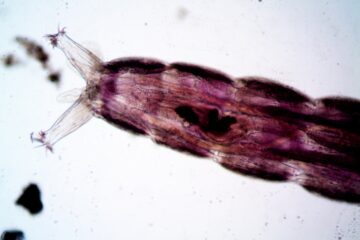![]()
Introduction
One of the main purposes of conducting a forensic science investigation is to examine evidence, which plays a very crucial role in determining the guilt of the accused. With the advent of technology and advancement in science, forensic science has taken investigation procedures up a notch, which in turn has guaranteed justice with fewer and fewer lacunas. Any investigation starts with the identification and collection of evidence from the crime scene, primarily. All workers involved, from the initial responders to the information’s final consumers, should be adequately knowledgeable about the forensic process, the scientific disciplines, and the specialised services offered by forensic laboratories. The golden rule of forensic science investigation is that there should be no alteration and contamination of the crime scene before the forensic team completes its investigation. The forensic team starts the investigation first, to avoid any contamination that might sweep in later.
The initial responder, who is often a police officer, is crucial to the entire process of the crime scene investigation.
- The police officer’s first duty is to protect the integrity of the crime scene and the evidence.
- The police officer is in charge of promptly documenting the crime scene and any relevant evidence.
Since non-forensic staff are typically the initial responders in most situations, effective evidence handling training at the scene of crime is essential to carrying out these tasks properly. If there is a chance that the evidence may be lost, tainted, or destroyed, the first responder—who is often not expected to further examine the scene—must do some basic recovery techniques prior to the arrival of the crime scene investigators. The duties of the first responder may need to go beyond preservation and recording in cases when there is no chance that the crime scene will be investigated by crime scene investigators[1].
Crime scene preservation is absolutely essential to not only finding the person responsible for the crime, but also ensuring he or she faces justice and is held accountable for their crime. If the crime is not sealed or handled properly, the forensic investigation would itself be doubtful or, in fact, would not be conclusive. The chain of evidence would not align or there would be a totally different story. Moreover, this not only hampers the evidence but justice in toto.
Crime Scene Contamination
Forensic evidence usually consists of the bits and pieces found here and there and then examining them. Now these small imprints can be easily contaminated. For example, small hairs found can be swept or blown away by an open window. The staff at the site frequently contribute to crime scene contamination. In general, the more people there are at a scene, the greater the chance that perhaps the scene or the evidence may be contaminated. People on the scene can themselves botch the scene. They can deposit hairs, fibres, smudge their fingerprints with the important ones, their footwear patterns can be mixed or eliminated, latent footwear or fingerprints, or trace material from their clothes.
With a fair amount of certainty, the analysis of biological fluids and, more recently, cells recovered from crime scenes may be used to rule out or include potential suspects and to calculate how closely the DNA of the crime scene and suspects is related. The DNA technology being utilised in crime laboratories around the nation may xerox the DNA from samples that are either too small or too damaged to generate a sample big enough to be tested. The importance of minimising the possibility of contamination at crime scenes grows as a result of the analyst’s capacity to xerox extremely minute quantities of DNA from biological evidence. Single hairs, sweat, and/or saliva accidentally left behind by an investigator at a crime scene can now waste time, raise the possibility of eliminating a credible suspect, and muddle or complicate the interpretation of the physical evidence.
The degree of crime scene contamination also depends on case to case and offence to offence. Like in the case of a homicide, the first responders, paramedics, investigators, crime scene examiners, coroner or medical examiners, prosecuting attorneys, and possibly supervisors. The family, friends, and neighbours of the victim may be present. Furthermore, in serious offenses, the behaviour of the victim’s family is quite uncertain and hostile, which further makes it more important for police personnel to take due caution in sealing the crime scene. Even the family pet can destroy and alter the evidence. In contrast, a robbery may involve only the police officer and the victim. Hence, the higher the number of people, the greater the probability of contamination of the crime scene. Even a slight cough or a sneeze in the vicinity of an item of evidence may totally damage its credibility.
Another main cause of contamination is environmental factors. Wind, sun, rain, snow, and temperature can play a key role in the destruction of the evidence at a crime scene. Slightly higher or lower can change the properties of the forensic evidence. For example, blood on a balcony can be diluted with rain, or the sun can heat it and change its intrinsic properties. Further examination would be difficult or, at best, inconclusive because of the fluid’s degradation or bacterial contamination. A footwear print trail can be washed away in the rain, or the wind might blow away fibres.
Technology is relied upon. As we assume, computers can not make mistakes. Though that’s not true! A slight contamination in the forensic evidence can alter the whole algorithm of the process and lead to an inconclusive result.
Even after the location has been safely closed off, contamination is always a possibility. One police officer typically secures the area. If no preparations are taken for more people approaching the crime scene from other directions, this becomes an issue. In some circumstances, it might be quite challenging to completely secure the area from unwanted visitors.
In the Noida double murder case of fourteen-year-old Aarushi Talwar and 45-year-old Hemraj Banjade[2]it attracted quite a controversy due to its twists and turns, which became a speculative story for the public. The case clearly reflects the importance of securing the crime scene and letting the forensic team investigate at the very first opportunity.
The UP police was criticised for not cordoning off the crime scene immediately. A forensic scientist later complained that when his team visited the house to capture the fingerprints, they found many people, including the media, freely roaming around the apartment, contaminating the crime scene. According to the CBI team, 90 percent of the evidence at the crime scene had been destroyed due to the police’s negligence[3]
Securing a crime scene that has occurred in a public place is even more challenging. Physical barriers are always required to clearly delineate the regions that are off-limits to the general public and other law enforcement employees. Simple barriers like a rope or other markers with notices attached can be employed. Visual barriers around the site help to limit access and lower the danger of contamination. A command post should be set up after the location has been identified. By limiting people’s access to the area and monitoring who enters and leaves, establishing a command post lowers the risk of scene contamination.
The equipment used to record and analyse crime scenes is another potential source of contamination. Crime scene employees must be aware of any potential cross contamination that their tools may produce. It needs extraordinary care to transport the evidence away from the site without contaminating it or causing it to be destroyed. Some evidence, especially biological evidence, could be vulnerable to temperature extremes or variations.
Conclusion
Timeliness is a big factor in the processing of a crime scene. Crime scenes deteriorate rapidly. Each and every bit of information is crucial. Since the beginning of evidence analysis, law enforcement and forensic professionals have been concerned about the possibility of evidence contamination. Other than the probability of the accused to tamper with a witness, a lot of other factors can contaminate the scene, such as human and environmental factors. The general rule of forensic science investigation is that there should be no alteration or contamination of the crime scene before the forensic team completes its investigation. The forensic team starts the investigation first, to avoid any contamination that might sweep in later. Effective evidence handling training at the scene of the crime is crucial to performing these responsibilities correctly because non-forensic professionals are frequently the first responders in most circumstances. Forensic scientists should be the first ones to investigate the crime scene. They are well trained to carefully recover evidence. While law enforcement has been slower to adopt procedures in contamination prevention, forensic scientists in the laboratory are attentive to the issue of contamination and have created processes to identify and limit the danger of contamination. The need for crime scene employees to become more aware of contamination concerns has increased due to recent developments in forensic DNA technology. To ensure that the individual guilty of the crime confronts justice and is held accountable for their act, crime scene preservation is extremely necessary. The integrity of the forensic investigation would be questioned or, in reality, would not be conclusive if the crime was not properly managed or sealed.
References:
[1]LNJN NATIONAL INSTITUTE OF CRIMINOLOGY AND FORENSIC SCIENCE, A FORENSIC GUIDE FOR CRIME INVESTIGATORS STANDARD OPERATING PROCEDURES 3 (Rina Mitra, Sandeep Mittal, 2015).
[2] Rajesh Talwar vs. CBI, (2014) 1 SCC 628.
[3] Pranjal Kshirsagar, Aarushi trial: A double murder of forensics and investigation(Nov. 26, 2013, 07:11 AM), https://www.firstpost.com/india/why-the-aarushi-trial-was-a-double-murder-of-forensics-investigation-1250025.html.



0 Comments